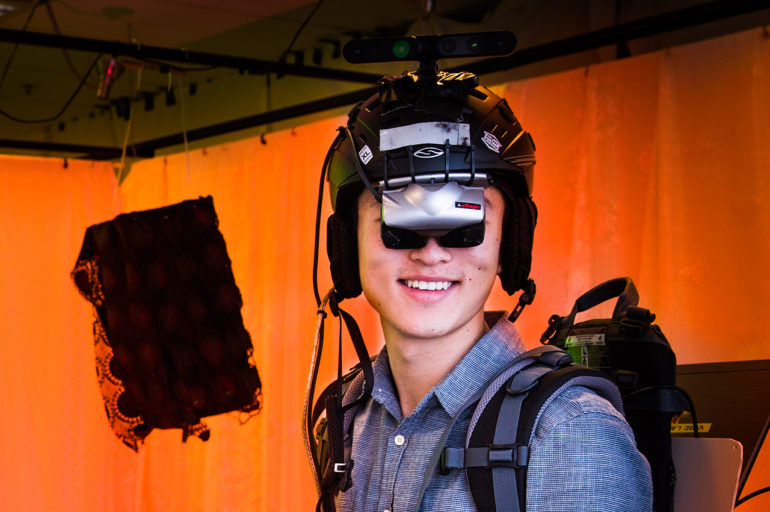Been there, sun that. That’s what competitors from this year’s World Solar Challenge will be saying as they head back to their home countries.
Last week, nearly 50 teams of university and high school students from around the world drove their solar-powered cars from Darwin to Adelaide. By the time they cruised into the City of Churches, they’d clocked up 3000 kilometres.
As the official scientific partner, our experts were there for the highs and the lows. Did you catch the daily updates from Dr John Ward? He was there at the solar-face of the event!
We’ve hand-selected some of the most memorable moments from the most renewable of road trips.
On your marks! Get set! Solar!
“The place is a buzz,” says Dr John Ward. John is one of the trusted scrutineers at this year’s @WorldSolarChlg ?
“We’ve had 14 teams today, at 18 check stations … a massive day!”
You can join the free, solar-powered fun in #Darwin this week! #BWSC19 https://t.co/N5E5NkmXcZ pic.twitter.com/cUrGhlkwkr
— @CSIROevents (@CSIROevents) October 8, 2019
Scrutineering sounds like something a pirate might engage in, but it’s a very serious business. Long before the event begins, scientists make sure the teams’ vehicles are up to scratch. It’s a heady start to the event. The teams spent months designing and building their cars, and they have to meet stringent requirements. For instance …
Australia has the highest solar radiation per square metre of any continent. So sunny! ???
But competitors in this year’s World Solar Challenge can use *no more than 6 square metres* of solar panels ?https://t.co/N5E5NkmXcZ
? @JUSolarTeam
Fact: @GeoscienceAus#BWSC19 ^KC pic.twitter.com/E71BkyT2bB— @CSIROevents (@CSIROevents) October 9, 2019
Still confused about scrutineering? Allow John to explain what happened in that big, bustling building in Darwin.
Like any self-respecting group of uni students, there were some last-minute changes before the big event began.
Scenes from Day 1 of the World Solar Challenge … ?
Yesterday morning teams were working hard on last minute fixes on their solar cars before they started their 3000km journey☀️
Film by Dr John Ward, @CSIRO scientist and Assistant Chief Scrutineer at @WorldSolarChlg #BWSC19 pic.twitter.com/PFyCnRIh8T
— @CSIROevents (@CSIROevents) October 14, 2019
But after a week of engine-checks and test-runs, the teams all set off into the red centre of Australia. First stop: Katherine!
The World Solar Challenge is well underway! ?️?
The teams took off from Darwin yesterday morning. ☀️@SolarTeamTwente set the pace in the competition's smallest car, reaching the first control stop in Katherine in ~4 hours. Bravo!
Stunning sunset ? by @blueskysolar77 #BWSC19 pic.twitter.com/Wn2RKMaHF8
— @CSIROevents (@CSIROevents) October 14, 2019
Drive, drive, drive. Arrive … then run, run, run! The Eindhoven Solar Team were the first to arrive in Tennant Creek.
Scenes from @WorldSolarChlg!☀️
Team @SolarEHV are the first 'cruiser class' car into Tennant Creek ?
They'll charge from solar this afternoon, and top up using the @CSIRO charging station (aka electric vehicle supply equipment or EVSE) tonight.https://t.co/N5E5NkmXcZ #BWSC19 pic.twitter.com/LeK9cU00Tz
— @CSIROevents (@CSIROevents) October 14, 2019
Our side-experiment on electric cars and the grid
A big part of this year’s World Solar Challenge was the ‘grid-interactive charging’ experiment.
We ran this Australia-first experiment at the two charging stations: one in Tennant Creek, one in Coober Pedy. Our scientists want to study the effects of multiple cars plugging into the grid to charge. One day, this could be a reality en masse for the population! So, while we only had nine vehicles on the grid at the same time, the data from this experiment will help us to build a better picture of electric car use for the future. (Plugging the cruiser fleet into Coober Pedy is roughly equivalent to putting 100,000 electric cards on the Australian national energy market!)
Tonight we're looking to make history!
Up to 18 solar cars will charge off the grid at the same time in Tennant Creek. It's the most electric cars of any sort, including #Teslas, to charge in one spot in Aus?
Proud to say it's based on our tech! ?#bwsc19 @WorldSolarChlg pic.twitter.com/xBYDE6iGgj
— @CSIROevents (@CSIROevents) October 14, 2019
By simultaneously charging the ‘cruiser class’ cars, we had the opportunity to look at how many electric cars might benefit the electricity grid. How could they benefit the grid, you ask? We could use the cars’ energy storage to provide grid services (stabilising the electricity system), much like the Hornsdale Power Reserve (aka the Tesla Big Battery in South Australia). But the conditions were not perfect: hot weather in Tennant Creek meant the cars charged slower than expected, to manage battery temperatures. (Read more about it if you’re so inclined.)
The future of solar technology
“We’re no longer at the stage of needing to wait for renewables to get cheaper,” said John Ward.
“The challenge now is how we integrate and manage renewables — along with their variability and intermittency — into our energy systems. There is still lots of opportunity for innovation in energy storage systems: this year we saw some of the highest energy packs ever (Wh/kg), but also saw battery failures that we need to better understand and avoid.”
For John, the future of solar technology is bright. He’s looking forward to solving some of the remaining questions about solar tech: How do we transition to electric cars? How can we export renewable energy? What happens if (when?) we move away from personally owned transport?
But for the moment, John is still buzzing from the World Solar Challenge.
“The highlight for me for was spending the night at the Coober Pedy drive-in cinema, watching Red Dog in the cold and the wind, while teams recharged their cars and we monitored the power quality behaviour of cars recharging systems. A truly bizarre and inspirational night.”


9th November 2019 at 9:02 am
Why did the Solar Challenge get so little media exposure?? Too threatening???